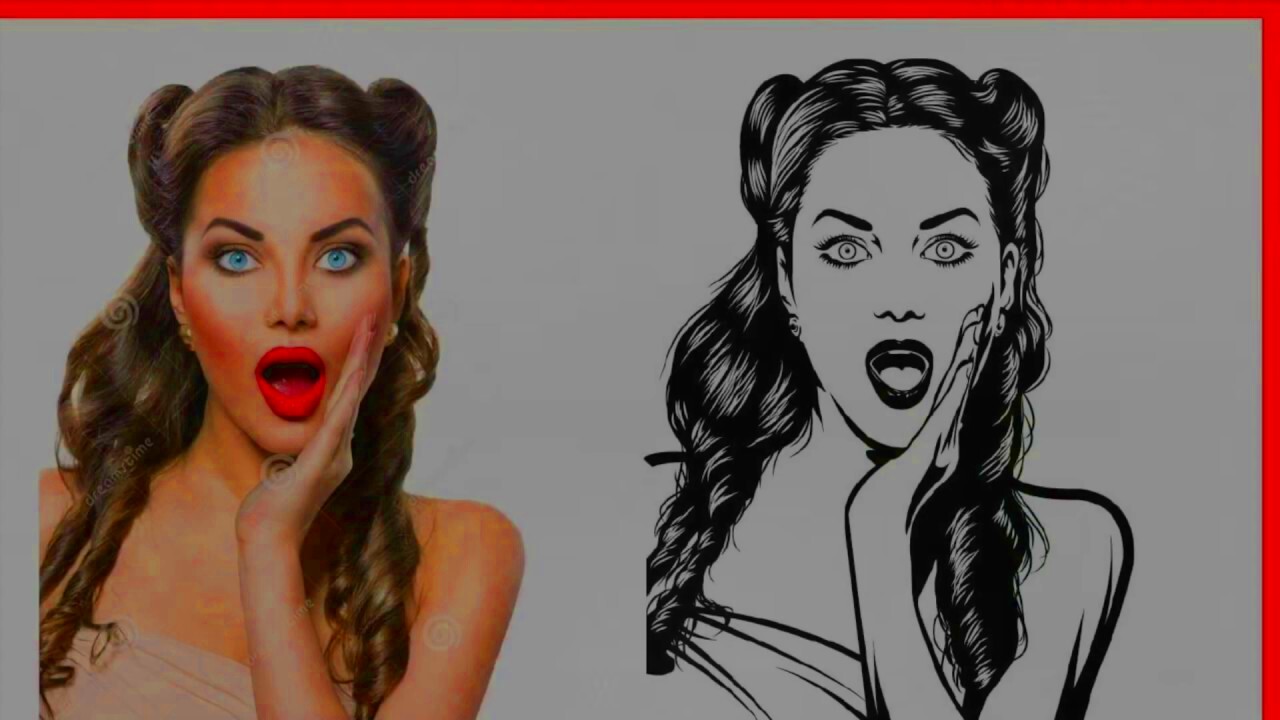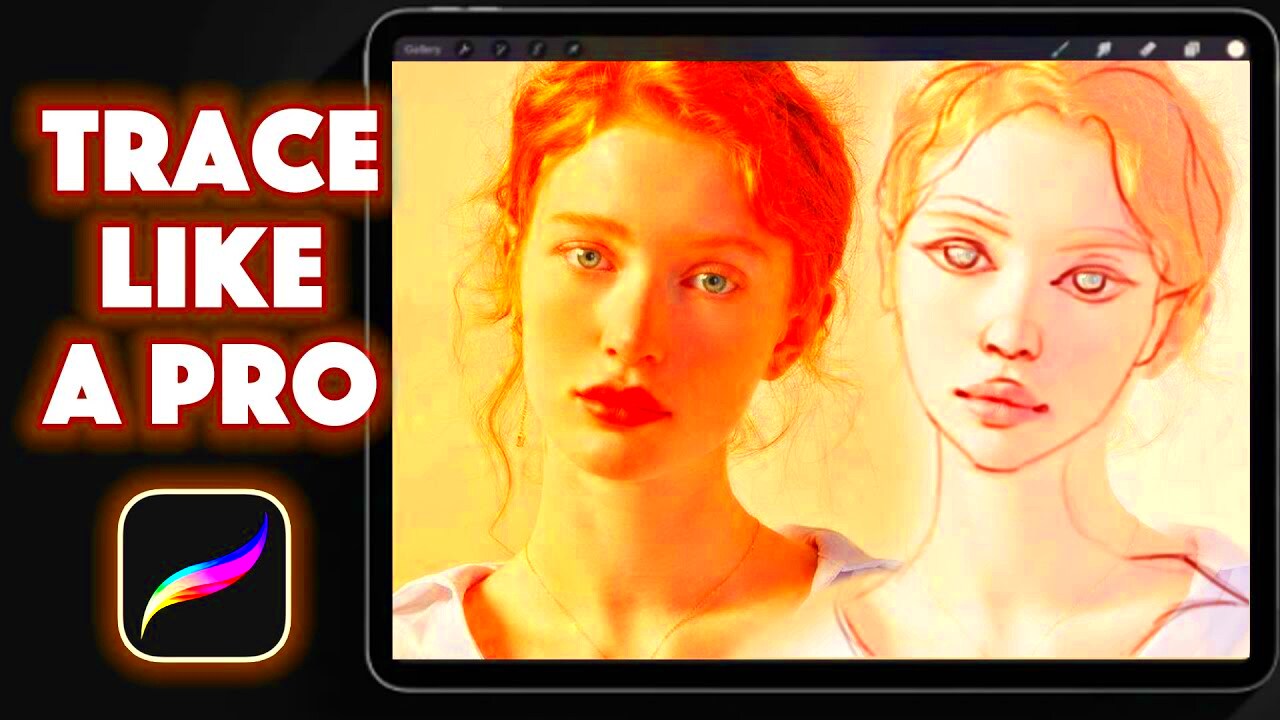Digital tracing is a popular technique that artists and designers use to create stunning visuals. It involves converting a raster image into a vector format, making it easier to edit and resize without losing quality. This method is particularly useful in various creative fields, including graphic design, illustration, and animation. By mastering digital tracing, you can enhance your artistic workflow and bring your ideas to life with precision.
Here are some key benefits of digital tracing:
- Quality Preservation: Tracing allows you to maintain image quality while resizing, making it ideal for both print and digital use.
- Easy Editing: Once an image is traced, editing elements becomes simpler, giving artists greater control over their designs.
- Versatility: Digital tracing can be applied to various art forms, from logos to detailed illustrations, providing endless creative possibilities.
- Time Efficiency: This technique can save time compared to traditional drawing methods, allowing artists to focus on creativity.
Exploring Tools and Software for Digital Tracing

When it comes to digital tracing, choosing the right tools is crucial for achieving the best results. Various software options cater to different skill levels and requirements, making it essential to find one that fits your needs. Here are some popular tools:
- Adobe Illustrator: A leading choice for professional graphic designers, Illustrator offers advanced tracing features and extensive editing capabilities.
- CorelDRAW: This versatile software is favored for its intuitive interface and powerful tracing tools.
- Inkscape: A free, open-source alternative that provides excellent tracing features for beginners and advanced users alike.
- Procreate: Ideal for iPad users, Procreate supports tracing with its intuitive touch interface, perfect for digital painting.
Each of these tools has its strengths, so exploring them can help you find the best fit for your projects.
Also Read This: Uploading an Image to ESPN Fantasy Football
Step-by-Step Guide to Digital Tracing Techniques

Getting started with digital tracing can be exciting, but it’s essential to follow a structured approach. Here’s a simple step-by-step guide to help you master this technique:
- Choose Your Image: Start by selecting a high-quality image that you want to trace. Clear, well-defined images work best.
- Import the Image: Open your chosen software and import the image into your workspace. Adjust the size as necessary.
- Adjust Opacity: Lower the opacity of the image layer. This makes it easier to see your tracing lines without distraction.
- Use the Pen Tool: Select the pen tool to outline the main shapes of your image. Focus on capturing the essential details.
- Refine Your Paths: After outlining, refine the curves and lines for smoothness. Take your time to achieve clean lines.
- Add Color: Once the tracing is complete, add colors to different sections. Experiment with gradients and shading for depth.
- Final Touches: Review your work, make any necessary adjustments, and save your traced image in the desired format.
By following these steps, you’ll be well on your way to creating beautiful digital art through tracing!
Also Read This: Saving YouTube Community Post Pictures on Mobile Devices
Best Practices for Effective Digital Tracing
To get the most out of digital tracing, it's important to follow some best practices. These tips can help you create cleaner, more professional-looking designs while saving time in the process. Whether you're a beginner or have some experience, implementing these practices will elevate your tracing skills.
- Start with High-Quality Images: Always choose images with high resolution. The clearer the original image, the better your tracing will be.
- Use Layers: Organize your work by using multiple layers. This allows you to separate outlines, colors, and effects, making adjustments easier.
- Zoom In: Don't hesitate to zoom in on details while tracing. This helps you focus on the finer points and achieve precision.
- Utilize Keyboard Shortcuts: Familiarize yourself with keyboard shortcuts in your software. They can speed up your workflow significantly.
- Take Breaks: Digital tracing can be tedious. Taking short breaks helps maintain focus and prevents burnout.
- Experiment: Don’t be afraid to try different techniques and styles. Experimentation can lead to unique results and new skills.
By incorporating these best practices into your digital tracing workflow, you’ll likely find that your efficiency and the quality of your work improve significantly.
Also Read This: Master Dailymotion Navigation with Simple Video Guides
Common Mistakes to Avoid in Digital Tracing
Even experienced artists can make mistakes when it comes to digital tracing. By being aware of common pitfalls, you can avoid them and improve your final product. Here are some mistakes to watch out for:
- Ignoring Image Quality: Using low-resolution images can lead to pixelation in your traced design. Always start with the best quality.
- Over-Tracing: Adding too much detail can clutter your design. Focus on key elements and simplify where possible.
- Neglecting the Color Palette: Using too many colors can make your design look chaotic. Stick to a consistent color scheme.
- Skipping Planning: Jumping into tracing without a plan can lead to a disorganized workflow. Sketch out your approach first.
- Forgetting About Composition: Always consider the overall composition of your work. Balance is key to an appealing design.
- Not Saving Progress: Failing to save your work frequently can be frustrating. Make it a habit to save often.
By avoiding these common mistakes, you can streamline your digital tracing process and create more polished and effective designs.
Also Read This: How to Use Natural Light to Enhance Your Photography
How Digital Tracing Enhances Art and Design Projects
Digital tracing is not just a technique; it’s a powerful tool that can significantly enhance your art and design projects. By using this method, you can achieve stunning visuals that stand out. Here’s how digital tracing can elevate your creative work:
- Increased Precision: Tracing allows for precise shapes and lines, making your designs more professional and appealing.
- Efficient Reproduction: Once a design is traced, you can easily reproduce it in various formats, saving time for future projects.
- Versatile Styles: Digital tracing opens the door to various artistic styles, from simple line art to complex illustrations.
- Enhanced Creativity: By simplifying the technical aspects of drawing, tracing allows artists to focus more on creativity and less on technique.
- Improved Collaboration: Clean, vector-based designs are easier to share with collaborators, making teamwork smoother.
In conclusion, digital tracing enhances both the process and outcome of art and design projects. Whether you are a hobbyist or a professional, integrating digital tracing into your workflow can unlock new possibilities in your creative journey.
Also Read This: How to Submit My Photos to Getty Images
Real-World Applications of Digital Tracing
Digital tracing has become a game changer in various industries, making it a valuable skill for artists and designers alike. From creating logos to enhancing educational materials, the applications are diverse and impactful. Let’s explore some real-world uses of digital tracing that showcase its versatility:
- Graphic Design: Designers often use digital tracing to create logos, branding materials, and promotional graphics. This ensures crisp lines and scalable designs suitable for different formats.
- Animation: In animation, tracing is used to create smooth character movements and backgrounds. Artists can trace over sketches to achieve fluid transitions and vibrant visuals.
- Illustration: Digital illustrators use tracing to convert hand-drawn images into digital art. This allows them to refine their work and experiment with colors and effects easily.
- Web Design: Traced images are commonly used in web design to create visually appealing interfaces. Clean vector graphics enhance user experience and site aesthetics.
- Education: Educational materials, such as diagrams and charts, often utilize tracing to present complex information clearly and engagingly.
These applications highlight how digital tracing can transform ideas into professional-quality designs, making it an essential tool for creatives across various fields.
Also Read This: How to Upload Voice Memo to YouTube with Ease
FAQs about Digital Tracing in Art and Design
Digital tracing can raise many questions, especially for those new to the technique. Here are some frequently asked questions that can help clarify common concerns:
- What is digital tracing? Digital tracing is the process of converting raster images into vector graphics using software tools. This allows for scalable and editable designs.
- Do I need special software to trace images? Yes, various software options, like Adobe Illustrator and Inkscape, provide tools specifically designed for tracing images effectively.
- Can I trace images from the internet? While you can trace images found online, ensure you have the right to use those images, as copyright issues may arise.
- Is digital tracing suitable for beginners? Absolutely! Digital tracing is an excellent way for beginners to learn about shapes, lines, and color application while building their skills.
- How long does it take to master digital tracing? Mastery varies from person to person. Regular practice and experimentation can significantly speed up the learning process.
These FAQs should help you better understand digital tracing and how to incorporate it into your creative work.
Conclusion on the Importance of Digital Tracing
In summary, digital tracing is a vital technique that enhances creativity, precision, and efficiency in art and design. Its applications are widespread, from graphic design to education, showcasing its versatility across various fields. By mastering digital tracing, artists can elevate their work, creating professional-quality visuals that stand out.
Whether you're looking to simplify your workflow or explore new artistic avenues, digital tracing can open up exciting possibilities. So, if you haven't yet embraced this technique, now is the perfect time to start!

 admin
admin








